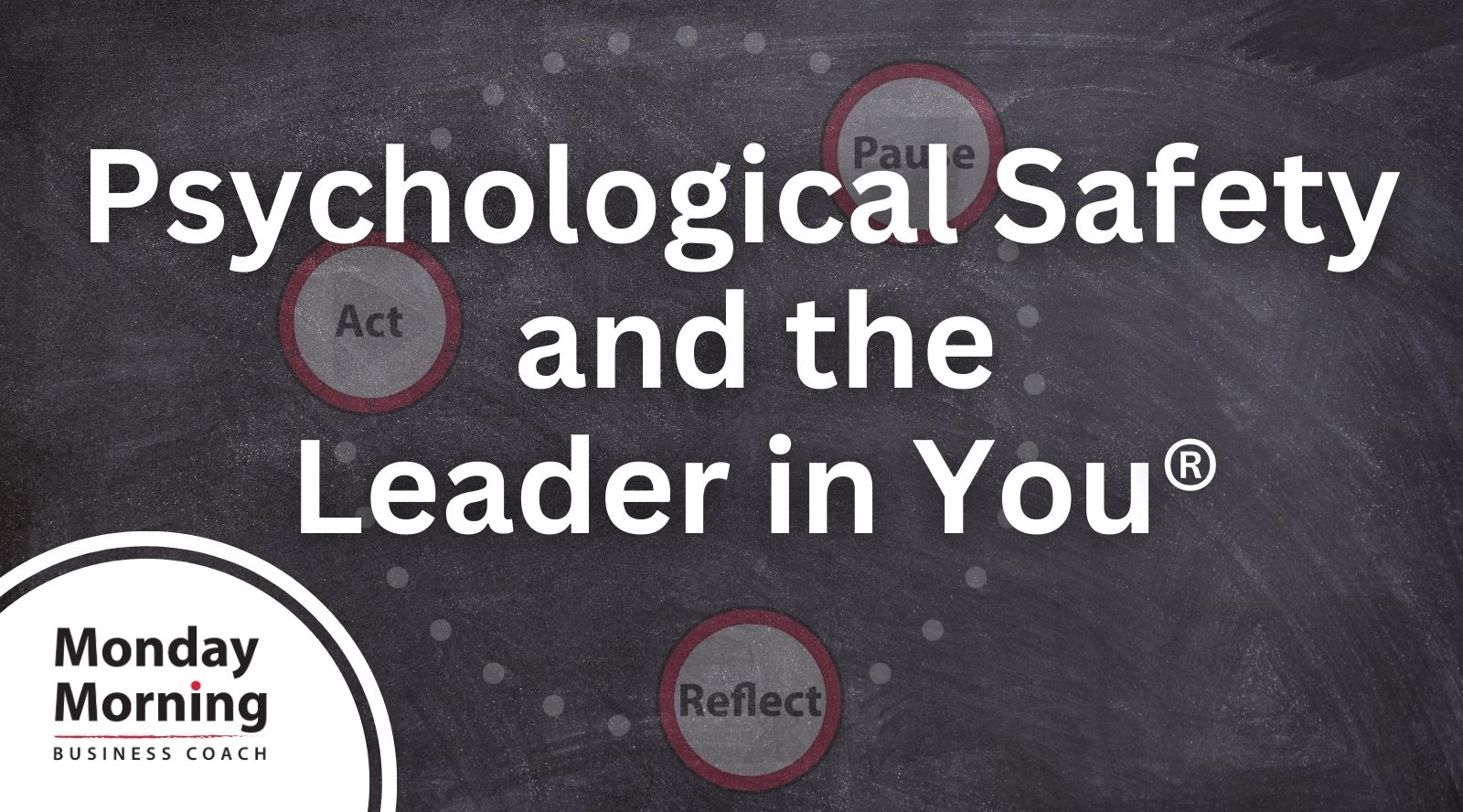Our definition of leadership is similar to an operationalized definition of psychological safety, and in fact, when put into practice, is central to creating it. This definition is at the core of our work and our Leader in You® framework.
Leadership is the willingness to influence your world
and the willingness to allow your world to influence you,
regardless of your role or title.
Leadership that fosters psychological safety can and should happen at every level. Since leadership can happen regardless of role or title it can be integrated into every single individuals’ behavior throughout the organization.
Over the last couple of months, we’ve been talking about the steps to our Leader in You framework, reminding you that if you keep focusing on influencing others and allowing them to influence you, you can create a foundation of trust and psychological safety with your teams.
When you work with our Leader in You framework,
you’ll increase your success,
engage others to support your efforts,
and stay on track
as you navigate the opportunities and challenges
that each day brings.
Whether you’re PAUSING, REFLECTING, and/or leading with one (or any combination) of the ACT with POWER steps, you’ll find greater success in your leadership because people will feel that they belong to something larger than their individual goals.
This framework provides you the tools to influence your world and be influenced by your world, lead and engage others, demonstrate emotional agility, create psychological safety, and successfully navigate the stressors of your world.
As a reminder, Amy Edmonson of Harvard University, first introduced the idea of psychological safety in 1999 in the Administrative Science Quarterly, as:
“a belief that one will not be
punished or humiliated for speaking up
with ideas, questions, concerns, or mistakes,
and that the team is safe for interpersonal risk-taking”
Next week, we’ll dive into how using the Leader in You framework can help you, as a leader, to build that solid foundation of trust and psychological safety. Then, in two weeks, we’ll explain how you, as a team member, can work toward creating trust and psychological safety with your team.
Creating psychological safety
requires ongoing attention and tending to,
at every level.
This week, consider our Leader in You® framework as you’re working with your colleagues and/or employees, and look for opportunities to begin building (or deepen) the level of trust on your team.
As always, let us know how it’s going!
If you’d like support
to create psychological safety on your team
contact us today.


